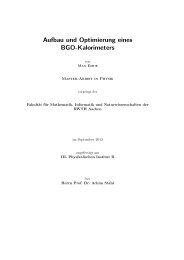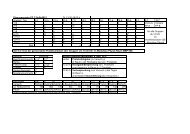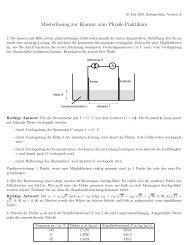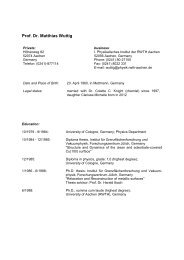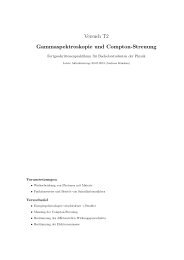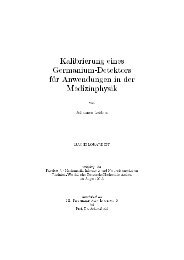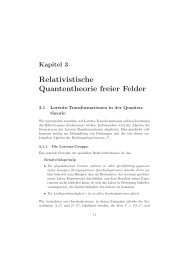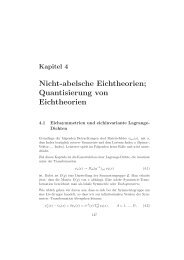Visual Physics Analysis VISPA - RWTH Aachen University
Visual Physics Analysis VISPA - RWTH Aachen University
Visual Physics Analysis VISPA - RWTH Aachen University
Create successful ePaper yourself
Turn your PDF publications into a flip-book with our unique Google optimized e-Paper software.
Figure 3. The Event Browser within the <strong>VISPA</strong> graphical platform.<br />
turnaround due to dynamic typing and automatic memory management. It is based on Qt [12],<br />
a widely spread cross-platform application and user interface development framework. Due to<br />
its implementation in PyQt [13], <strong>VISPA</strong> has been successfully distributed on Linux, Mac OS X<br />
and Windows based systems.<br />
4. The Event Browser<br />
At the beginning of any analysis it is often useful to inspect the input data. <strong>VISPA</strong> provides<br />
such a tool not only for the input data, but also for inspecting the structure and the contents of<br />
the data at any step of the analysis. The Event Browser is designed as a plug-in of the <strong>VISPA</strong><br />
GUI (see Section 3). Browsing physics event data in <strong>VISPA</strong> allows the verification of physics<br />
analyses on an event-by-event basis (Fig. 3). In the left window a complete content of an event<br />
is represented as a tree. Each object can be explored by selecting it and inspecting its contents<br />
in the property grid on the right-hand side. The user can search or filter objects with respect<br />
to their name, any of their properties, or using a user defined Python script. In addition, the<br />
visualization of decay trees allows to check if all relations have been established correctly. In<br />
the decay tree the particle type (boson, lepton, quark) is indicated by its color and line shape.<br />
To display complex decay trees, the <strong>VISPA</strong> Event Browser incorporates an algorithm for<br />
their proper layout (pxl::AutoLayout). The algorithm is based on a model of physical forces,<br />
like spring forces, or gravity. Each starting point and end point of a particle is provided with<br />
a node subjected to these forces. Using an iterative procedure, the positions of the nodes are<br />
optimized with respect to balanced forces. This algorithm results in a well-distributed view of,<br />
e.g., asymmetric decay trees.





